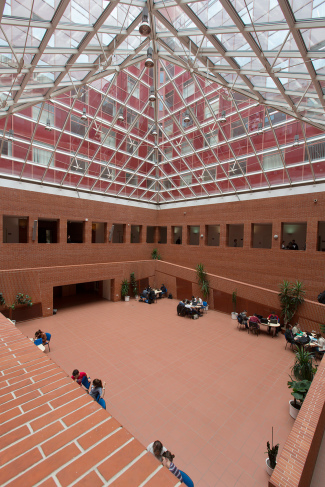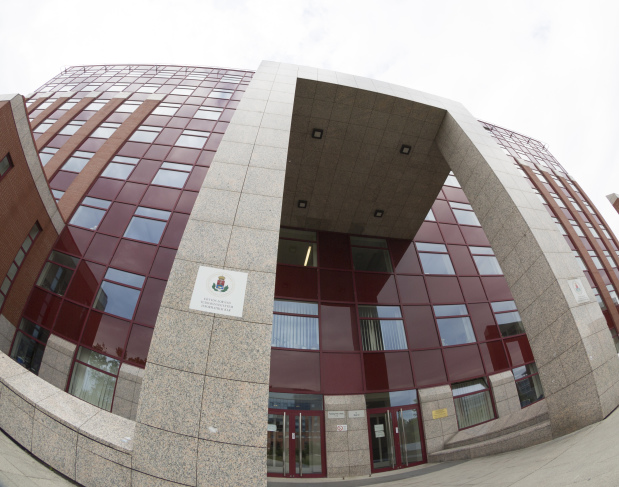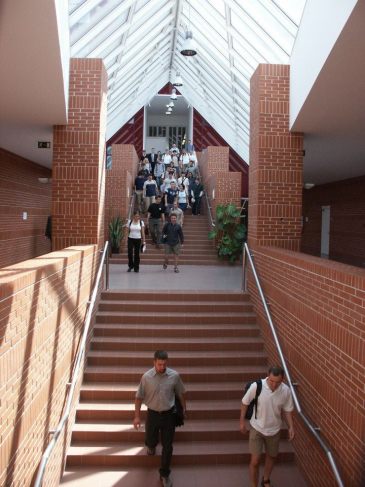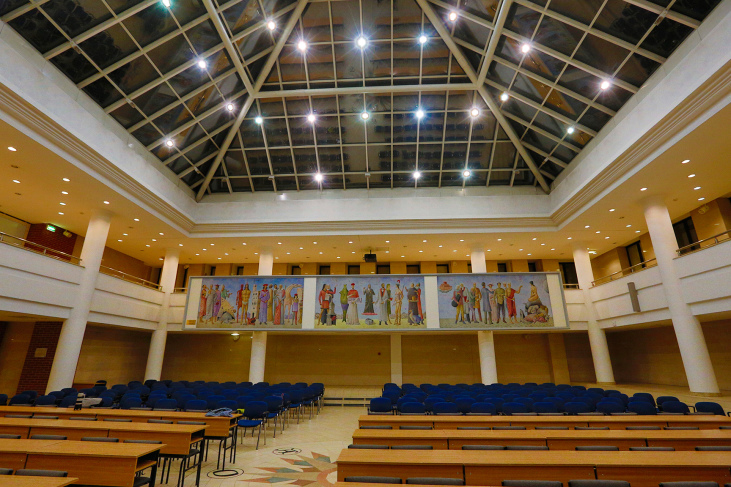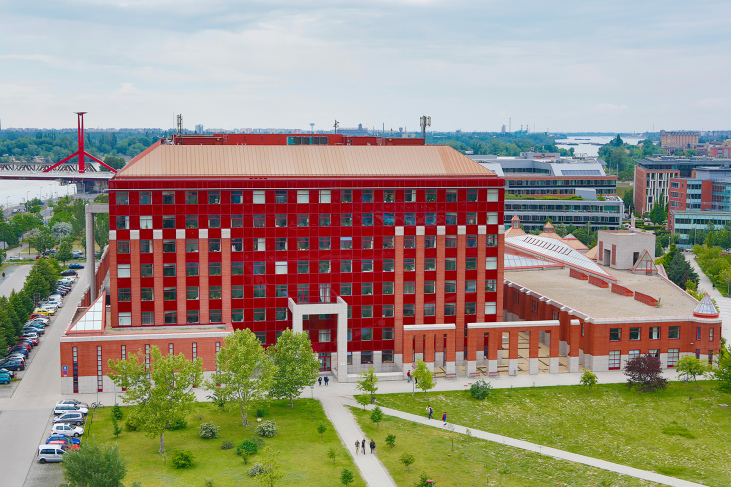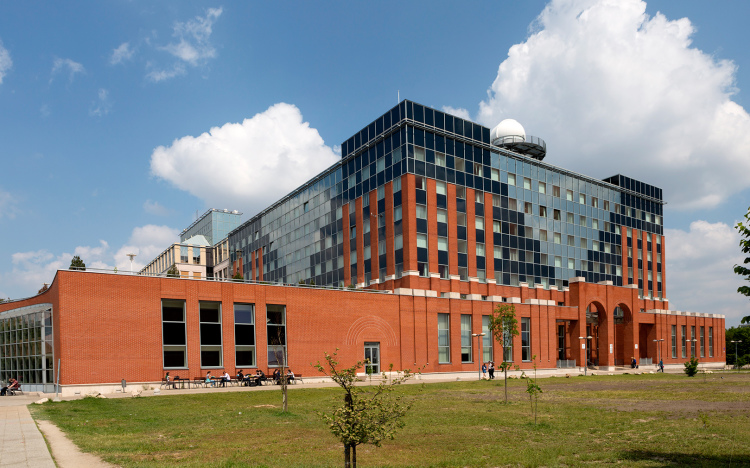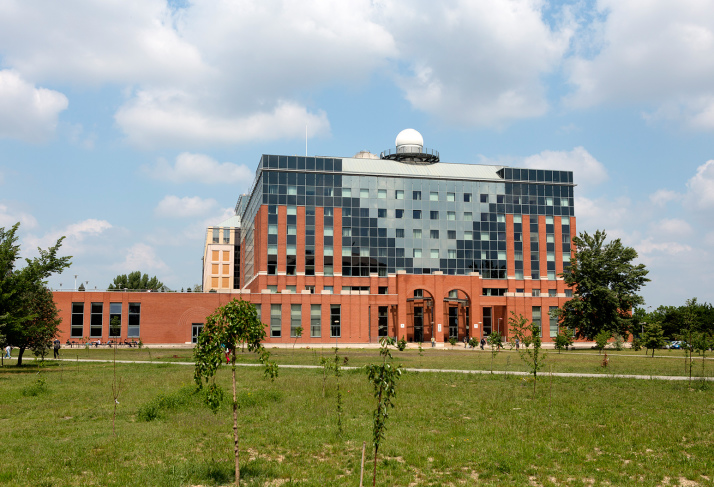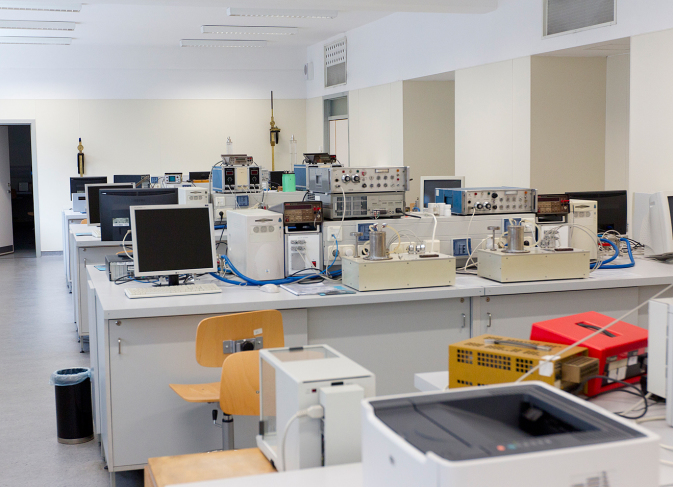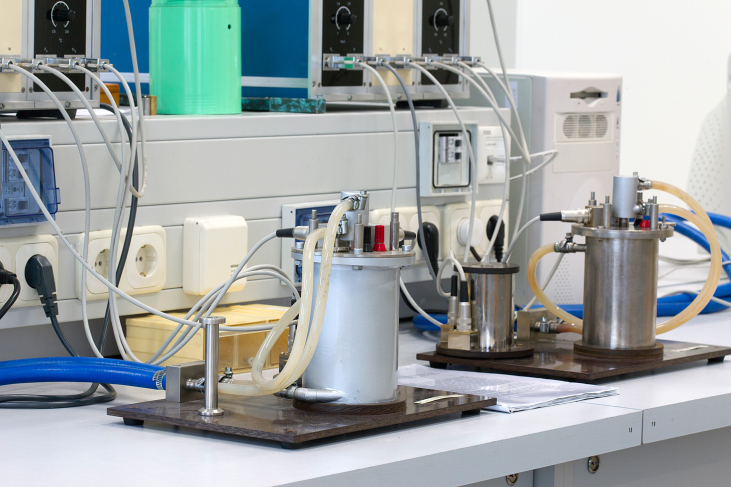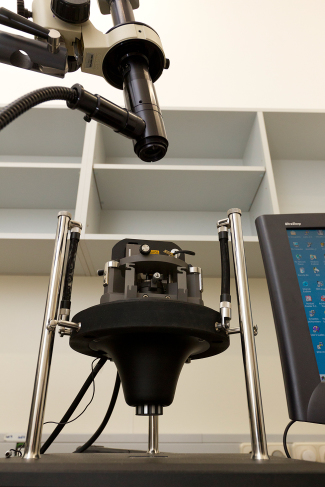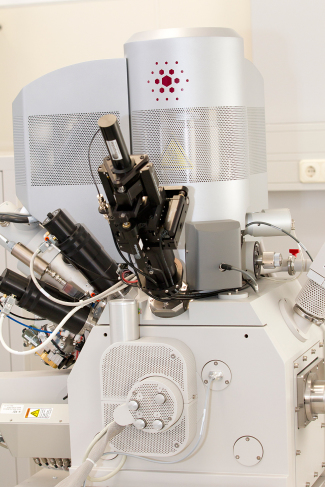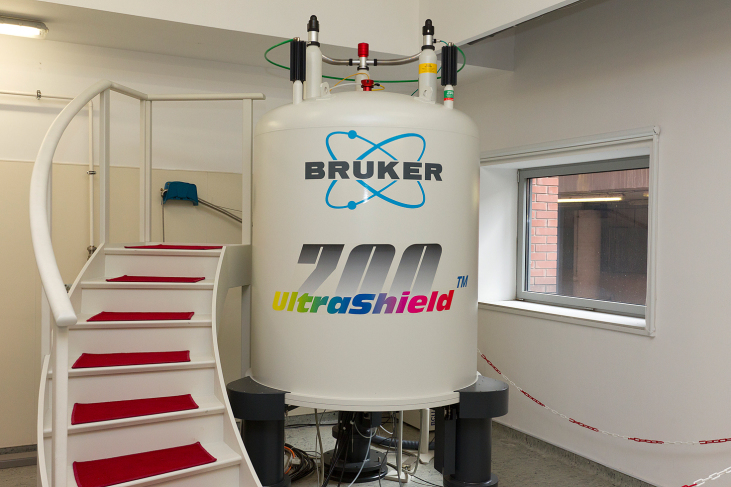Meteorology MSc
Meteorology MSc
Meteorologist
Degree program
Master
FF/1442-2/2015
English
4 semesters (2 years)
120
2
10
The goal of this program is to extend the knowledge of BSc level students, and to learn about different meteorological phenomena, their driving forces, and to gain knowledge on the state-of-the-art methodology that is used in the practice and also about climate change and its environmental consequences. Students have to learn about the multidisciplinary nature of meteorology and the possible connections with different other scientific fields and sectors.
This program is recommended to applicants who have strong background in physics, mathematics and meteorology or environmental science. Applicants should have deep motivation and ability to learn about the theory of weather forecast and climate modelling, and they should be able to apply their knowledge in the practice. Applicants should be able to understand the different spatial scales that are associated with the variety of meteorological phenomena.
This program enables students to gain knowledge about the methods and tools that represents today’s meteorology and cutting edge research. With the MSc degree they will have the skill set to be able to apply the practice, measurement and observation-oriented analysis methods, as well as the knowledge of weather forecasting and climate modelling. Depending on their ambitions they will be able to continue their studies in a PhD program. The courses are divided into two parts. Students have compulsory courses covering general meteorology required for everybody (e.g. fluid dynamics, dynamic meteorology, informatics, climatology, synoptic meteorology, environmental protection). By the end of the first semester the students have to choose a specialization: weather forecaster or climate researcher. The specialization will cover 30 credits of compulsory classes in the next three semesters. The courses for the specializations cover the full spectrum of the selected field. Students with missing background in a particular field of meteorology are required to fulfill prescribed BSc classes up to 20 additional credits. The master thesis work that is due to the end of the 4th semester is taken into account as 20 credits.
Specializations: weather forecaster, climate researcher
The Meteorology MSc program offers high level of theoretical meteorology courses as well as diverse courses on applications. Students are encouraged to participate in the research projects of the professors, where they can learn the latest research methods and acquire experience in teamwork. Students who spend extra work on a subject lead by their professors can participate in a national scientific competition among students from all universities. In addition to the faculty members, lead researchers of the Hungarian Meteorological Service, the Meteorology Division of the Hungarian Military, and the Meteorological Service of the Liszt Ferenc International Airport also offer thesis supervision. This helps the students find the most appealing topic for their thesis lead by the most appropriate expert.
Structure of all Master's programs of the Faculty of Science
I. Mathematics, physics, informatics module
The basics of set theory, relations, functions, cardinality of sets, introduction of the real numbers, real sequences and their convergence, monotone sequences, partial limits, classical theorems of sequences, continuous functions, uniformly continuous functions, differentiable functions, mean value theorems, theorems of Riemann integrability, Jordan measure, null sets under Jordan and Lebesgue measure
Using graphics under UNIX/Linux, the X Window System (X11), using X under MS Windows. The Grid Analysis and Display System (GrADS). Introduction of data formats handled by GrADS. The GRIB format, the European Centre for Medium-Range Weather Forecasts (ECMWF) as GRIB provider. Numerical weather prediction in a nutshell, analysis and forecast in meteorological practice. The ERA40 and ERA Interim databases. Data retrieval from ECMWF MARS database and processing of GRIB files using GrADS. Basic graphical settings, simple mathematical calculations in GrADS, the ERA40 Atlas.
The basics of hydrodynamics. The ideal fluid flow, energy flux and impulse flux, The conservation of circulation, gravitational waves, the equations of motion for the frictional fluid, energy dissipation in incompressible fluid. The law of similarity. Turbulence. Boundary layer. Flows on the rotating Earth. Vorticity, potential vorticity. The geostrophic motion. Shallow water flow, Rossby-waves, quasi-geostrophic motion of stratified fluid.
Laws of thermodynamics, reversible and irreversible processes, thermodynamic potentials and Legendre transformation, Maxwell relations, Jacobi transformation, phase transitions, the Clausius-Clapeyron equation, Gibbs' phase rule. Basics of the chemical thermodynamics, thermodynamics of gases, monatomic and polyatomic ideal gases, real gases.
First order linear and quasilinear PDEs. Second order linear PDEs, classification. Parabolic and hyperbolic initial value problems. Hilbert spaces, Fourier series, linear operators. Elliptic boundary value problems. Eigenvalue problems, separation of variables. Fourier series expansion of the solution. Green’s function, spherical functions. Parabolic and hyperbolic initial- boundary value problems. Fourier transform, wavelets.
II. Dynamic and synoptic meteorology module
Systematization of previous Dynamic meteorology studies during BSc. Hydro-thermodynamic system of equations and scale-dependent simplifications. Closure problem. The scale analysis of the equations, balance motions. Ageostrophic motions. Circulation theory. The vorticity and divergence equations and their meteorological applications in synoptic and mesoscale processes. Tendency equation. Rossby-waves. Development of cyclonic systems. The role of potential vorticity in the evolution of atmospheric processes. Discontinuity surfaces, frontogenesis, formation and development of frontal systems. The aim of the practices is to increase the problem solving ability of the students (balance motion, fronts, divergence, vorticity, potential vorticity, atmospheric waves, frontal systems),
...
Turbulence in the air II, closure of the system of hydro-termodynamic equations, structure of the planetary boundary layer, description of synoptic-scale movements, forms of instabilities in the atmosphere, basic concepts of energetics of the atmosphere: forms of energy in the atmosphere, energy conversions, general circulation.
System of hydro-thermodynamic equations of the atmosphere, initial and boundary conditions, task of prognosis, representation of the system of hydro-thermodynamic equations in different coordinate systems, mapping, isobaric equations of vorticity and divergence, integral invariants of the system of dynamic equations, theorem of the conservation of vorticity, available potential energy.
Conceptual models of synoptical scale weather phenomena: weather fronts, rapid cyclogenesis, wave development, substructures in fronts, non-frontal synoptic scale phenomena, mediterranean cyclones; Practice: the tools of weather analysis and forecast
General characteristics of meso-scale atmospheric phenomena, mesometeorological data assimilation, circulation systems forced by different surface- radiation budgets (lake circulation, slope wind, urban heat island), meso-scale systems forced by orography (orographic waves, downslope windstorm), low level jet stream, free convection and forced convection, air mass thunderstorms, multi-cell thunderstorms, supercells, mesoscale convective systems, tropical convective processes, convective processes associated to frontal systems, frontal circulation, symmetric instability.
III. Atmospheric Physics and climatology module
Brief history, the ionosphere, atmospheric electric circuit, atmospheric electricity in the fair weather zone and under thunderstorm, electrified nonthunderstorm clouds, electrical nature of thunderstorms, corona and point disharge, lightning, electromagnetic radiation from lightning, Schumann resonances, red sprites and blue jets.
The problem and basic concepts of changing climate, natural and antropogenic sources of climate changes, perspectives of the global warming, radiative forcing of greenhouse gases, concepts and types of global climate models, tools, results and limitations of the models used for global climate change, regional characteristics of the global climate change. Introduction to paleoclimatology. Climate changes from the beginning of instrumental meteorological observations.
Preparation and application of computer programs in FORTRAN 77 or FORTRAN 90. Importance of verification of the algorithm. Mathematical calculations with real meteorological data. Organizing code using subroutines and functions, usefulness of Makefile. Handling of missing data using MS Excel and FORTRAN. Calculation of simple statistical parameters, postprocessing of the results in MS Excel.
Subject, aim and activities of agrometeorology, biological and physical processes of the soil-plant-atmosphere system, exchange of radiation, heat, moment and mass, the soil, gas diffusion in soils, diffusion of heat in soils, soil temperature, water content potential, water flow in soils, hydraulic conductivity of the soil, transport processes of materials solved in the water.
Components of the climate system. Modelling of the radiation balance. Mechanisms of climate change. Hierarchic system of climate models, limitations. Major feedbacks of the climate system. Possibilities of past and future climate modelling. Results of global climate models, climate scenarios. Regional climate models nested into global climate models. Possibilities of regional downscaling methods, results. The latest results of international climate modelling projects.
The Equations of Motion. Equations of Motion With Viscosity. Response of the Upper Ocean to Winds. Geostrophic Currents. Wind Driven Ocean Circulation. Vorticity in the Ocean. Deep Circulation in the Ocean. Equatorial Processes. Numerical Models. Ocean Waves. Coastal Processes and Tides.
The basic terms of air pollution. The main air pollutants. Emission trends and strategies. Global environmental issues: Stratospheric ozone layer depletion and global climate change. Urban climate. The transport of air pollutants and transformation processes. The diffusion equation and the numerical solution. Transport modells: Gaussian-model, Puff-model, Langrangian and Eulerian models. Optimal choice of location for industrial facilities. International conventions. Measuring systems and instruments.
IV. Meteorological methods
Structure of the meteorological measurements. Automatic surface weather stations, Data processing and verifications. Upper layer measurements. Measurements in the planetary boundary layer. Methods of remote sensing. Radar measurements. Lightning location. Satellite observations. Other, specific measurements.
The connection between aviation and meteorology. The important meteorological information for aviation. Measurements at airports and airplanes. Aviation meteorological telegrams (METAR, TAF, SPECI). Hazardous weather phenomena in aviation.
Satellite orbits, radiation measurements from satellites, systems of meteorological satellites, digital processing of meteorological satellite measurements, determination of wind vectors, nephanalysis, calculation of earth surface temperatures, identification of cloud types, determination of vegetation indices, vertical sounding of the atmosphere, visual evaluation and synoptic application of satellite pictures.
Probability distributions for the main meteorological elements. Estimation and checking of probability distributions. Concept of stochastic processes and time series. Estimation of main characteristics (expected value, covariance and correlation functions) of stochastic processes. ARMA models. Trend analysis. Spectral analysis, traditional estimation of spectra. Extreme value theory.
V. Optional subjects
Components of climate system and their interactions. Role of the oceans and hydrosphere in climate system. Biosphere. Cryosphere. Natural and anthropogenic factors of climate change. Radiation processes of atmosphere and surface. Perspectives of global warming. Theory of operation of global climate models, main types. Possibilities and limitations of climate modelling. Modelling components of climate individually and as a coupled system. Global and limited area models. Downscaling method of model results. Applying ensemble method in climate modelling. Possibilities of international cooperation. Assessing model results, uncertainties.
Main goals: introduction to micrometeorological processes in the surface atmospheric layer which is the place of human activities and give the practical knowledge for the investigation and planning air quality, human comfort, etc.
Main subjects: Definition and methodology of the micrometeorology. Structure of the boundary layer and the surface layer, molecular and turbulence diffusion, governing equations, principles of the modeling of momentum energy (latent and sensible heat), and mass (vapor, trace gases, aerosol) fluxes, closure hypothesis. Surface energy and water budget. Methodology of the surface layer measurements (radiation, energy budget components, profiles, fluxes). Surface as the initial and final point of the atmospheric cycles of air pollution.
Definition of
...
The relationship between ecology and climatology, photosynthesis, respiration, plant productivity, environmental factors affecting plant productivity; the relationship of plant productivity and climate on the continents: plant productivity in warm and humid, warm and dry, cold and humid and cold and dry climates, plant productivity in the oceans, the colour of ocean water, the global observation of productivity.
Global cycles of water, carbon, nitrogen and sulfur and their impacts on climate and productivity. Biogeochemical basics of ocean and land productivity.
Objective of the course is to understand the key topics of the preceding semester (e.g., data assimilation, ensemble predictions on short-range and climate time scale, lateral boundary conditions) in depth. It is expected for the students to work in small groups: they elaborate theoretical background of the chosen topic based on selected articles, and conduct some practical experiments using short-range numerical models available for educational purpose. The work is helped and supervised by experienced NWP practitioners. The course is completed with students’ presentations in which they discuss the investigated issues and the underlying results of the accomplished simulations.
Introduction to state-of-the-art meteorological data formats and data processing software. HTML basics, the KompoZer HTML editor. Creation of on-line teaching material [website] to document selected meteorological software. Creation of simple examples for the selected software. Publication of the material at the website of the Department of Meteorology, Eötvös Loránd University.
Handling of special meteorological data formats (netCDF, GRIB, binary) in Fortran 90 and C language. Script language applications for data handling and repetitive jobs. Introduction to special software package for meteorologists for data analysis (NCO, CDO) and graphics (NCL, GMT, VAPOR). Numerical problem solutions for linear equation systems and ordering. Complex problem solutions.
Main goals: description of the structure, turbulence exchange processes and measuring techniques in the planetary boundary layer (PBL). Fundaments of the mathematical modeling of PBL for environmental problems (air pollutions, wind energy resources, etc.)
Main subjects: Structure and daily variation of PBL, governing equations, turbulence, similarity theory in the surface layer and the whole PBL; 1D PBL models, Ekman-layer; turbulence transport of different properties (momentum, energy trace gases), local and nonlocal mixing; structure of the stable and unstable PBL; special PBL-s (above inhomogeneous surfaces, cities, ocean, orography, etc.); PBL - free atmosphere interactions.
Daily variations of trace gases in PBL. Parameterization of PBL and turbulence mixing in numerical
...
VI-A Weather forecasting specialisation
The NetCDF data format, advantages of using NetCDF. The COARDS and the CF convention. The CRU TS 1.2 and 2.1 datasets, practical examples using CRU data. Introduction to the ECMWF IFS model, work with ECMWF deterministic forecast and EPS data. Introduction to GrADS scripts. Creating flat binary files with GrADS for FORTRAN. Exporting 2D meteorological fields from GrADS, reading the data with FORTRAN, data manipulation with 2D fields. Creating binary output with FORTRAN and reading the result with GrADS.
Traditional and advanced methods of the synoptic analysis, forecasting of synoptic situations, prediction of individual meteorological elements, analysis of the actual weather, short- and medium-range forecast of the real weather.
Overview of the energetics of laminar and turbulent flows. Forced and free convection. Large and small scale eddies. Available potential energy and global circulation. Lorenz cycle of atmospheric energy. Impacts of ageostrophy on the energetics of global circulation.
Conceptual models of subsynoptical scale weather phenomena: mesoscale phenomena, concective weather features, orographical weather features, low clouds, small scale conceptual models; tropical weather, teleconnection systems; Practice: Synoptic meteorological features of the Carpathian Basin, possibilities to utilize statistical and dynamical predictions, information content of numerically predicted fields for meteorological purposes, synoptic forecasts and evaluation of their reliability
Necessity for simplification of the system of hydro-thermodynamic equations, similarity theory, method of order analysis, quasi-static (primitive) system of equations, approximations to the system of prognosis equations, linearization of the system of atmospheric equations, the five basic modes of atmospheric motions, parameterizations of atmospheric microphysical processes and surface-atmosphere interactions.
Typical weather situations of the Carpathian Basin, case studies of interesting weather situations, analysis of the actual weather, short- and medium-range forecast of the real weather, oral and written presentation of the actual prognosis.
Nonparametric estimation of probability distributions. Nonparametric estimation of trends. Principal component analysis and factor analysis. Independent component analysis. Nonlinear principal component analysis. Canonical correlation analysis. Concept of random fields. Traditional interpolation techniques. Interpolation with krigings. Multivariate AR models.
The connection between aviation and meteorology. The important meteorological information for aviation. Measurements at airports and airplanes. Aviation meteorological telegrams (METAR, TAF, SPECI). Hazardous weather phenomena in aviation.
Fields of media meteorology: television, radio, social media, newspapers, websites, blogs, popular science journals. Actual questions of the national and international media meteorology. Methods of the argumentation: simulation of a TV dispute. Preparing blog spots and radio reports
The course introduces the theoretical and practical background of numerical methods used in meteorological (weather prediction and climate) modeling. Particularly, the special characteristics of the models applied for different time scales are discussed: discretization methods for spatial and temporal derivatives of the primitive equations (finite difference and Galerkin methods), stability issues, semi-implicit and semi-Lagrangian methods, data assimilation techniques (optimal interpolation, variational and ensemble data assimilation), ensemble approach (perturbation generation, representation of model errors), basics of physical parameterizations, special features of different forecasts from short-range to climate time scale.
VI-B Climate research specialisation
Possible sources of climate related data on the Internet. The IPCC reports in a nutshell, the Met Office Hadley Centre/CRU estimations. The NetCDF data format, advantages of using NetCDF. The COARDS and the CF convention. The CRU TS 1.2 and 2.1 datasets, practical examples using CRU data. Introduction to GrADS scripts. Creating flat binary files with GrADS for FORTRAN. Calculation and visualization of climate diagrams. Exporting 2D meteorological fields from GrADS, reading the data with FORTRAN, data manipulation with 2D fields. Creating binary output with FORTRAN and reading the result with GrADS.
Natural and anthropogenic factors of climate change. Radiation processes of atmosphere and surface. Concentrations of atmospheric gases and their changes. Natural and anthropogenic greenhouse effect. Changes of atmospheric ozone concentrations. Climate system. General circulation of atmosphere. Sulphur and nitrogen compounds in precipitation. Acid rain. Role of the oceans and hydrosphere in climate system. Biosphere. Cryosphere. Components of climate system and their interactions. Possible reasons of climate change. Perspectives of global warming. Theory of operation of global climate models, main types. Possibilities and limitations of climate modelling.
The role of the ocean and the cryosphere in the climate system. Discovery of the ocean and the cryosphere. Physical properties. Head budget. Ocean waves. The terrestrial cryosphere. The marine cryosphere.
Subject and task of hydrometeorology, hydrological cycle, basic equations of the water balance, elements of the hydrological cycle, precipitation, characteristic quantities of precipitation and snow cover, measurement of precipitation, analysis of precipitation data, evaporation, measurement and calculation of evaporation, evaporation models, infiltration, water flow in soils, measurement and calculation of infiltration, runoff, characteristics of runoff, mathematical models for runoff. Water balance, equations. Area-height-content analysis. Determination of possible maximum precipitation. Investigation on accuracy and confidence of hydrological forecasts. Enhancement of accuracy of hydrological forecasts with the application of meteorological forecasts.
Introduction of the chemical composition of the atmosphere; presentation of the properties, transformations and atmospheric roles of the major atmospheric components (gases and aerosol particles). Atmospheric budget of sulfur, nitrogen and carbon compounds. Formation of ozone and the composition of precipitation water.
Water movements in the soil-plant-atmosphere system, photosynthesis and respiration, models for photosynthesis, plant productivity and water supply, temperature of the plant and its surroundings, collection and analysis of agrometeorological data, modeling of physical processes of plant surroundings.
History of energy use: past, present, future. Types, origins, and potentially available resources of renewable energy sources. Energy and environmental policies. Sustainability.
Earth, biosphere, antroposphere, physical climate, chemical climate, their interrelationship, equilibrium state, water, carbon, nitrogen, phosphor and sulphur cycles, climate change, non-equilibrium state, positive, negative feedbacks, earth system models, dynamic global vegetation models, global circulation models, land surface processes in the dynamic global vegetation models, water transport, carbon transport.
Nonparametric estimation of probability distributions. Nonparametric estimation of trends. ARMA models for non-Gaussian processes. Parametric and nonparametric nonlinear time series models. Surrogate data method. Contemporary methods for estimation of spectra. Robust estimations. Multivariate AR models. Long-memory AR models.
The urban climate, urban climate researches’ history. The urbanization’s future. The factors and the process of the development of urban climate. The alteration of the climate parameters in urban environment. The urban heat island phenomenon and its modeling. Data sources for urban climate researches. The use of remote sensing data and its limits. The urban heat island analysis of European and Hungarian big cities. The expected effect of climate change on urban climate. The relationship between city planning and management and climate.
Creating climate change simulations using EdGCM global climate model. Compare the results of the model using different scenarios.
VII. Thesis
The Hungarian Meteorological Service, the Hungarian Military and the private meteorological sector are major employers of our graduates. Furthermore, a large number of graduates continue their research as PhD students at various universities in Europe.
The degree enables the students to understand and forecast weather events, to be able to use and visualize results of climate and weather forecast models, and to assess model results and measurements of related fields to meteorology.
Operational weather forecaster at national meteorological services, at military and commercial airports, and in public sector. Researcher at national meteorological services and research institutes. PhD studies, university professorial jobs. Environmental analysis in public sector.
4,190 EUR
4,190 EUR
160 EUR (non-refundable)
160 EUR (non-refundable)
4,190 EUR
160 EUR (non-refundable)
Yes
01, Sep, 2025
31, May, 2025
No
Entry requirements
Bachelor degrees in the field of Earth Science, Physics, or Environmental Science can be accepted (with a specialization in Meteorology).
Additionally, Bachelor degrees in Earth Science, Environmental Science, Physics, Mathematics, Geography and Earth Science Engineering can be accepted, if the applicant has at least 50 credits in the following fields:
geology (astronomy, geography, geophysics, cartography – at least 10 credits)
mathematics (analytics, probability, statistics – at least 12 credits)
physics (mechanics, thermodynamics, eletricity, optics – at least 12 credits)
computer science, programming – at least 6 credits
meteorology (climatology, dynamic meteorology, synoptic meteorology, aerophysics – at least 10 credits)
Language requirements
An internationally accredited language examination is required with at least a B2 CEFR level or equivalent result.
Examples of minimum level accepted:
TOEFL iBT 72 pts
IELTS 5.5
Alternatively, an official certificate issued by the applicant’s previous higher education institution can be accepted, stating that the applicant’s previous education (Bachelor’s degree) was completed entirely in English.
| Document |
| Online application form |
| Bachelor-level degree |
| Transcript of records |
| CV |
| Motivation letter |
| Letter of recommendation |
| Copy of the main pages of the passport |
| Passport photo |
| Medical certificate |
| Copy of application fee transfer |
| Language certificate |
The application starts in the online application system. Students need to register in the system, fill in the online application form, upload the required documents and follow the instructions during the application process. Prerequisite of the application is the establishment of a Skype interview where the student has to prove that he/she has sufficient theoretical knowledge to start the Master programme and to keep pace with the Hungarian students. Fluid English communication is expected for the successful application.
Procedure of the entrance examination:
The Applicant’s abilities in Meteorology, Mathematics and Physics will be orally tested by an examination committee (either personally or by telecommunication).
Type of entrance examination: oral
Place of entrance examination: Skype interview (or equivalent on-line interview)
Further details of selection and evaluation
The ranking is based on a total evaluation of the academic excellence (based on the submitted documents) and the results of the entrance exam.
Prof. Dr. habil. Róbert MÉSZÁROS
Head of the Doctoral School of Earth Sciences
Dr Zoltán BARCZA
Associate professor
E-mail: zoltan.barcza@ttk.elte.hu
Postal address: H-1117 Budapest, Pázmány P. sétány 1/A. Room 6.110
Mr. Péter MOLNÁR
International Coordinator
inter@ttk.elte.hu
+36-1/372-2695
More information
Faculty Website
Faculty of Science
Faculty of Science
0
/
0























0
/
0


